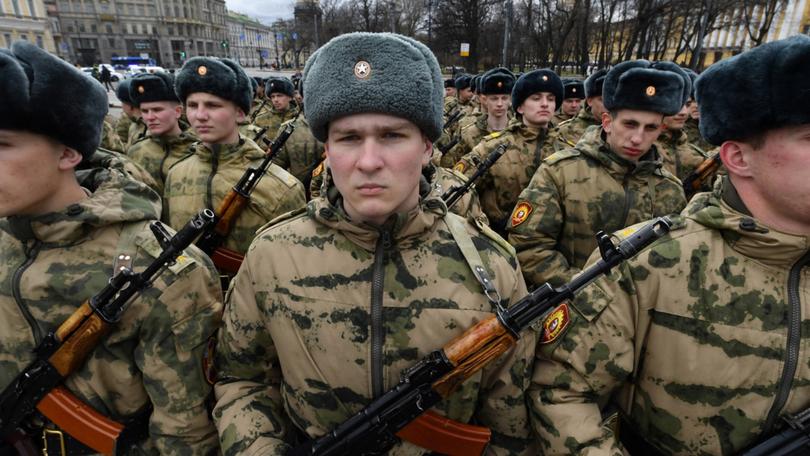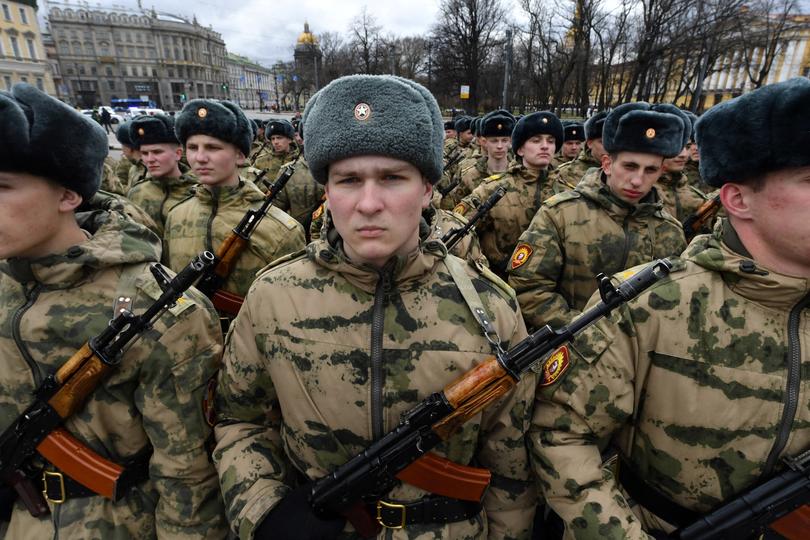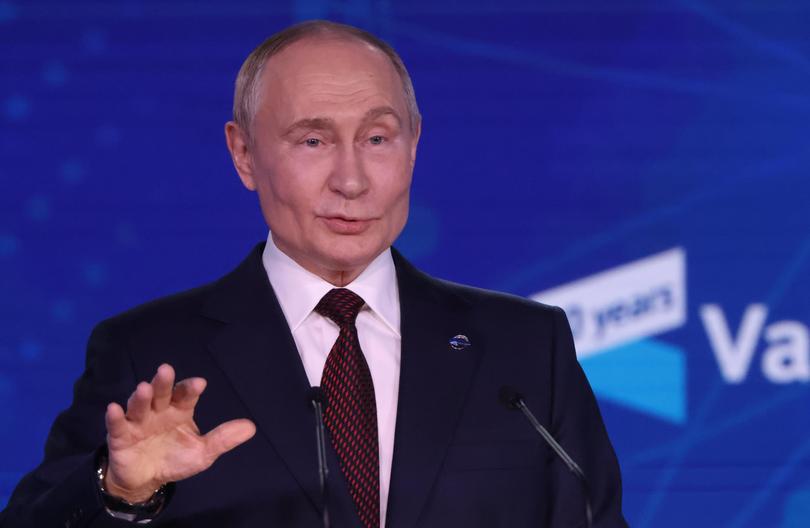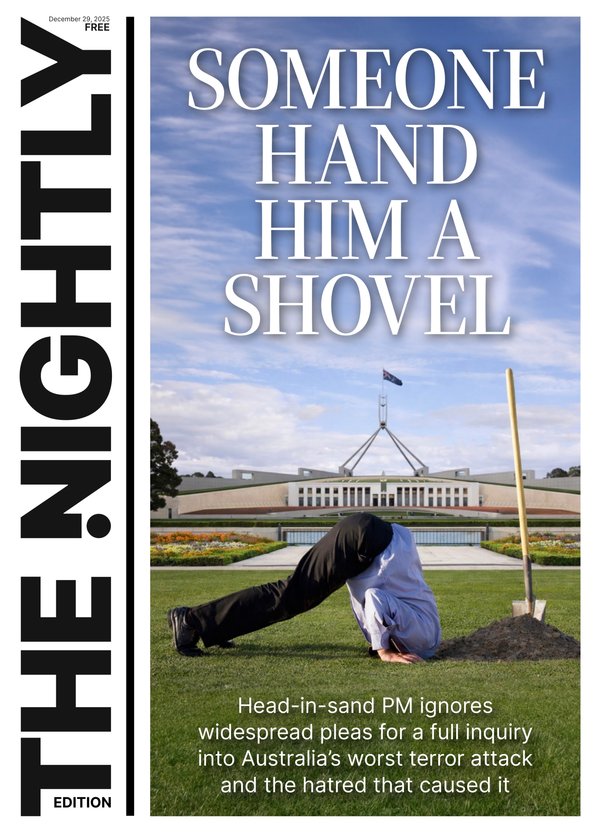THE ECONOMIST: Rouble trouble shows Russia’s reliance on China is becoming a problem for Vladimir Putin

Most central banks are cutting interest rates. Not Russia’s.
Last month policymakers raised rates to 21 per cent, a two-decade high; markets expect them to reach 23 percent by the year’s end. The shift is all the more unusual as it is happening at a time of war, when central bankers are normally loath to supress economic activity.
Russia’s economy has confounded analysts since the country invaded Ukraine in February 2022.
Sign up to The Nightly's newsletters.
Get the first look at the digital newspaper, curated daily stories and breaking headlines delivered to your inbox.
By continuing you agree to our Terms and Privacy Policy.Despite facing one of the tightest sanction regimes in modern history, it has undergone its fastest expansion in more than a decade. Russia enjoyed growth of 3.6 per cent last year and is expected to maintain such a pace this year.
Yet rather than being a demonstration of strength, the central bank’s decision to lift interest rates is a warning of trouble to come.
Government outgoings are increasingly difficult to sustain.
Russia’s budget, unveiled in September, included a plan to increase defence spending by a quarter next year. Taken together, annual expenditures on defence and security—a separate budget item that covers the intelligence services—are now expected to rise to 17trn roubles ($40b), an amount representing more than 40 per cent of all government spending or 8 pe rcent of Russia’s GDP. Defence spending alone will be 6 per cent of Russian national income, the most since the cold war.
That is a lot, but not unusual for a country at war.

America’s defence spending, for example, was 8-10 per cent of GDP during the Vietnam war. During the second world war the great powers devoted 40-60 perc ent of their total economic output to military ends. The crucial difference is to be found in monetary policy.
British policymakers in the early 1940s endeavoured, and mostly succeeded, in fighting what they termed “a 3 per cent war”, keeping interest rates near that level.
America’s Federal Reserve held rates at 2.5 per cent during the same conflict. Lower borrowing costs helped keep the large deficits affordable. By contrast, in Russia, the yield on ten-year sovereign debt has risen from around 6 per cent before the war to 16 per cent.
Conscripting prisoners and hiring North Korean soldiers is an unconventional indicator of a hot labour market, but it is one nonetheless. The Russian unemployment rate is a mere 2.4 per cent.
Spare capacity has been used up and the economy is showing all of the classic signs of overheating. Annual inflation is running at more than 8 per cent. Although increasing interest rates is the textbook response, it raises borrowing costs.
In the 1940s America and Britain kept inflation in check through a combination of steep increases in personal taxation, designed more to hold back household spending than to raise revenues, and rationing.
In today’s Russia such measures would be deeply unpopular and would be hard to square with Vladimir Putin’s propaganda.
And there is another reason why the country has been forced to tighten monetary policy. For most of WWII neither Britain nor America had to be especially concerned about the external value of their currency.
The dollar benefited from being seen as a haven, while America’s “Lend Lease” program provided Britain with military equipment and resources such as oil and food, doing so pretty much for free. Had Britain lacked an ally with the deep pockets and industrial capacity of America, willing and able to supply two-thirds of its imports, then the fall in the value of the pound would have become a military problem.
Mr Putin’s difficulty is that he lacks such an ally.
China has become Russia’s most important trading partner, providing a third of all imports and more than 90 per cent of microelectronics, which are used in drones, missiles and tanks. Yet such support is not being offered for free. Russian officials must therefore keep a wary eye on the value of their currency in terms of the yuan; this year it has fallen by 10 per cent, to near its lowest since the war began.
Russia, unlike the allies in the WWII, faces an external vulnerability. That, rather than inflation, is ultimately what has pushed interest rates to record highs.
Until recently, the Russian Government had cushioned the economy from higher borrowing costs.
A variety of schemes made it easier for households to suspend debt payments and for firms to borrow at lower subsidised rates, with the government stepping in to compensate banks for lost income. There are signs, though, that such programmes are becoming unaffordable.
A mortgage-subsidy scheme, which had allowed borrowing at a cost of just 8 per cent when official rates were much higher, ended on July 1st. Mortgage volumes halved in the following month. Corporate bankruptcies have risen by 20 per cent this year. The Russian Union of Industrialists and Entrepreneurs, a trade body, reckons investment plans for next year are being put on hold owing to heavy borrowing costs.
Higher interest rates will crimp spending by both firms and consumers.

The IMF expects Russian economic growth to slow sharply to 1.3 per cent next year. Even VEB, the state-run development bank, has cut its growth estimate to 2 per cent.
A combination of lower investment and manpower lost to the front is taking a toll. The need to maintain the value of the rouble to pay for crucial imports is a vulnerability for Mr Putin, and one which could soon take a toll on his ability to fight. He may be hoping that Donald Trump keeps his promise to bring the conflict to an end.
Waging a 3 per cent war is one thing; a 21 per cent war is quite another.
